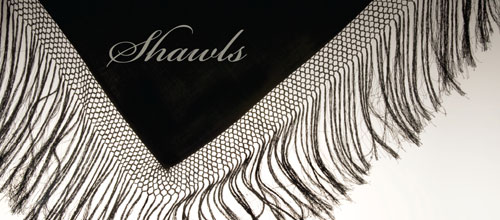
Shawls
The shawls of women carry their stories. Look at them, touch them.
Is the weave tight or open? The texture soft or harsh?
From this we know whether a woman was privileged or bought her passage to a new land with servitude.
The old hand-woven shawls of German-Russian women are striped orangey-red, olive, sage and indigo.
Preserved now, they are layered together, nested in pristine white papers.
Resting there they whisper of trousseaus and marriage, of babies, grandmothers and a happy, industrious culture.
In the Ukraine, factory-made plaid shawls are rough and heavy as grey winter twilight. The texture here is of persecution, prayer and shoulders that must bear the burden of betrayal. Telling of a people invited into a cold new land, then forced to leave at the point of a gun with what they could carry.
All these shoulders, yoked to a hard life, are covered in wool.
This is the texture of sustaining faith, the promise of a hereafter and songs of mourning. Carded, spun and woven by the adept hands of a spinster with a gift for fabric. Each six-foot length would wrap and hold a woman and her babe.
At sixteen her stride changes. Her body moves with a different ease, the thistledown lightness of a free-running child anchored by the gravity of womanly hips. A new head shawl replaces her girlish scarf - black wool of the lightest weight, the finest weave, square cut, the hem handkerchief-stitched, and fringed in black knotted silk. Long fringe and elaborate knotting are a sign of wealth and status. Wrap, tuck, tighten and knot under her chin so no wisp of hair escapes. The fringe dances as she works.
Her head covering symbolized all her responsibilities.
It defined her as respectable; as belonging to her family and community.
Beneath it her hair was uncut.
A long woven rope of hair, unbound and carefully dressed each Saturday.
Washing was a seasonal luxury so sweet oil kept it clean and soft.
Oiled, combed, braided, pinned and wrapped again.
A head shawl for waking; an old scarf for sleeping.
Always covered, but for that single precious hour.
Her time to care for herself.
North Dakota State University's Emily Reynolds Costume Collection is home to a set of shawls and head scarves once worn by women of the Germans from Russia who immigrated to North Dakota in the 19th and 20th centuries.
- L. Baker

































